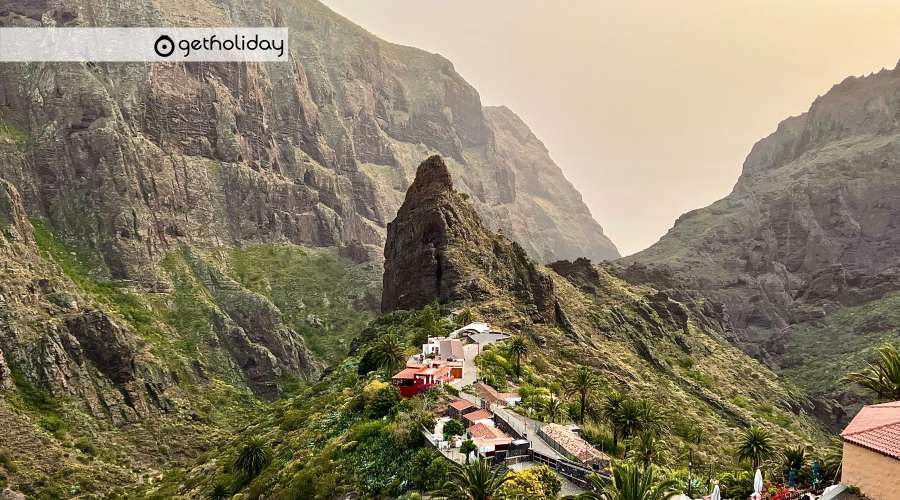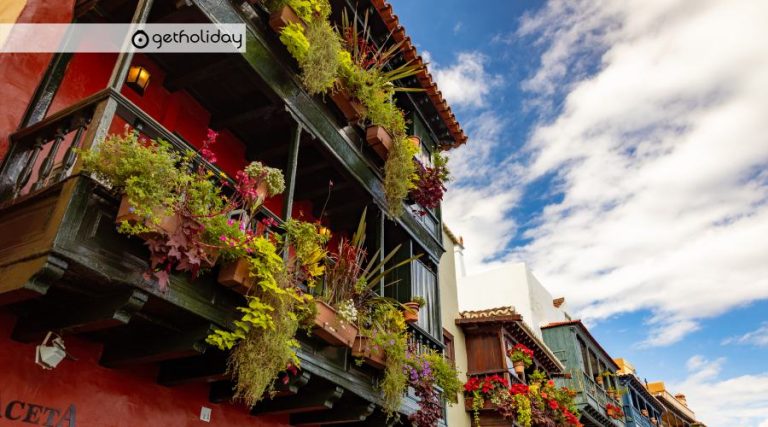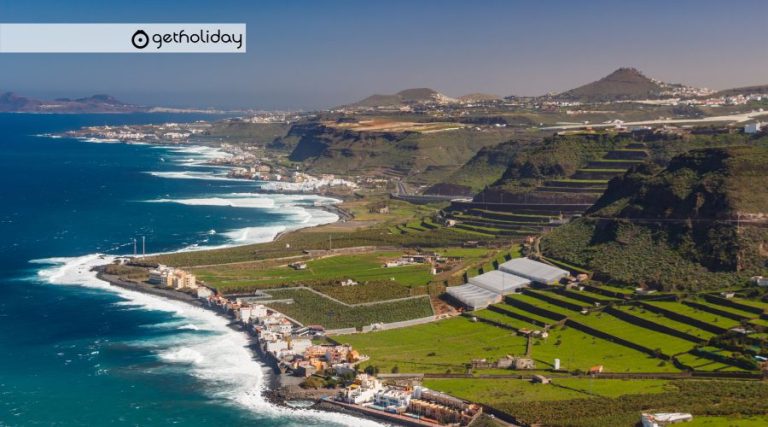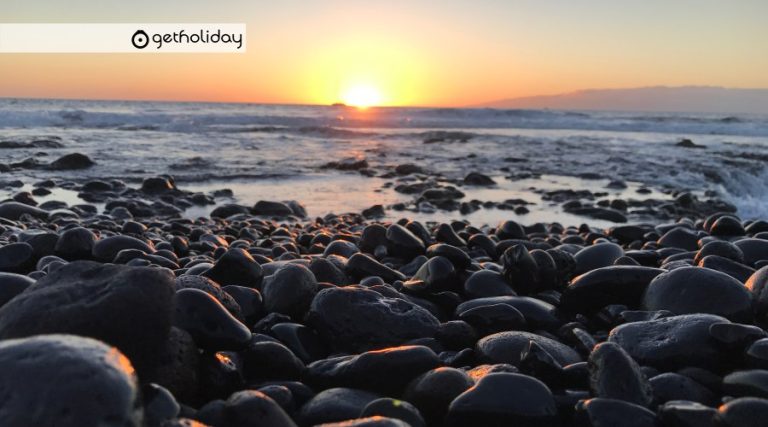The Masca hamlet
Today I want to show you this wonderful place, the Masca farmhouse, which happens to be one of the most visited places on the island of Tenerife.
The small houses of Masca are perfectly adapted to the difficult relief. They are grouped harmoniously in four hamlets: La Bica, El Turrón, La Piedra or Lomo del Medio and Lomo de Masca.
The main square is in La Piedra, in the shade of its enormous laurel tree. In it, there is the small hermitage of Na Sra. de la Concepción, from the XVIII century. Nearby is the house of Los Avinculados, one of the oldest in the hamlet.
When living off the land, there was no other choice but to place the dwellings in places less suitable for cultivation. Often the dwellings were built on the rock itself, fitting the rooms into the different levels of the terrain.
Old stone roads are still in many cases the means of communication between houses. They have systems for the drainage of rainwater and with sufficient consistency to withstand the passage of people and animals with loads, without the need for maintenance.
The set is complemented with some Eras (stone circles to thresh the cereal). dryers where the fruit was dried in the sun. Bread ovens, which today are in disuse.
The best example of the mastery in the construction is the resistance of the terraces. Countless stone walls, without cement or mortar, that convert the steep terrain into small plains where they can cultivate. Today many of them are abandoned.
The hamlet of Masca is the best example of popular architecture in the rural park of Teno. In 2004 it was declared a historical site in the list of Cultural Interest Assets of the Canary Islands Government.
Reasons for living in such a difficult place
It was only about 50 years ago that motor vehicles arrived in Masca. Before that time, all transfers of people and goods were done on foot or with animals, using cobblestone roads and trails. The nearest road passed through the town of Santiago del Teide, more than an hour’s drive away.
Here there was an abundance of an essential resource for subsistence: water.
The aboriginal population resided in the area, leaving symbols engraved on the stones. They left us numerous toponyms, such as the origin of the name Masca, which probably refers to the abruptness of its relief, since “askan” means horns or prominent peaks in the Berber language.
Masca belonged to the Menceyato de Adexe, one of the Guanche kingdoms. Adeje was a side of peace during the conquest of the island by the Castilian troops. They made agreements with the conquerors in order to try to safeguard their property, their freedom and even their own lives.
After the conquest, Don Alonso Fernández de Lugo, the Catholic Monarchs’ leader on the island, granted ownership of the lands of Masca to Don Diego de Adeje, in recognition of his collaboration in the conquest.
The adelantado also ceded some land to other conquistadors, making it clear that there was water for everyone. Except for Don Diego, who settled in Masca, these other owners lived in Buenavista, so administratively this ravine became part of that municipality.
We see how from the beginning, despite its remoteness and various difficulties, Masca was an interesting place because of its abundance of water, a very valuable asset on an island with few natural springs and continuous water courses.
Building with what was at hand
In such an isolated place, as is the case of the hamlet of Masca, it was better to make do with the materials available in the vicinity. For this reason, all the old constructions are made of volcanic stone, wood from the nearby forests, reeds and mud.
There are two types of traditional houses: rectangular and L-shaped. Access to each room was from the exterior patio, without interior corridors. Sometimes the houses had two floors. The second floor was often accessed without the need for a staircase, thanks to the unevenness of the terrain.
Basalt stone was very difficult to carve with rudimentary tools. Therefore, it was a real art to fit its uneven shapes together, as if it were a puzzle, to build the walls. In the walls of the orchards and houses, you can see how, between the large stones, smaller ones were inserted until they were solid enough to withstand the passage of time.
When a more regular shape was needed, as in the corner stones of the houses, tuff was chosen, a reddish volcanic material, easier to carve.
It was difficult to leave voids in these structures, so windows were tiny or nonexistent. In many cases, a stone arch over the doorway helped redistribute the weight of the roof. The walls were barely whitewashed. The roofs, gabled or hipped, had an internal structure of wood and cane that was covered with curved tiles, baked in nearby ovens, to waterproof the whole.
Only with the opening of the road, in the 70’s of the last century, new buildings with more modern materials could be erected.
The culture of the palm tree
The image of the hamlets of Masca is inextricably linked to the palm trees (Phoenix canariensis).
They rise slender between houses and on hillsides, and although it is a plant that grows naturally only in the Canary Islands, because of its elegance it has been planted in gardens and streets all over the world.
Despite its large size, it can exceed 30 meters in height and two centuries of age, it is not a tree, but a woody plant. What looks like a trunk is nothing more than the accumulation of the remains of previous leaves. Between the chinks of these leaves, organic matter accumulates that makes that, in many occasions, they are adorned with real hanging gardens with small plants like ferns and verodes.
In Masca, as in many other places in the Canary Islands, it was a very useful resource from which everything was taken advantage of. Its fruits, the tamaras, fed the cattle. With its trunks, beehives called corks were elaborated and with the hard central nerves of the leaves, the internal framework of the roofs of the houses was made. Nowadays, most of these uses have been lost, but palm handicrafts are still made with its dried leaves, for the manufacture of brooms, mats, baskets and hats.
Heroes of survival
Getting enough food in such a remote and rugged place is worthy of movie superheroes. Relying on a good rainy year to get some cereals, potatoes, cabbage, onions and grapes, raising a few goats, chickens and a few pigs? And to count on the fig trees, fighters capable of offering their sweet fruits even in the hardest years. That was life in Masca until the 70’s.
It is called heroic agriculture when it is practiced in very complicated soil conditions. The Masca onion is grown here, different from the one grown in the nearby hamlet of Los Carrizales, both recognized by the Agriculture Council of the Cabildo of Tenerife.
Honey is also harvested from the surrounding flowers and the abundance of water in the ravines is used to grow yams. Yams are tubers that must be cooked for many hours to soften. They are an accompaniment to meat or fish and are also eaten as a dessert at Christmas.
If you have the opportunity, taste these local products and take as a souvenir palm or wooden handicrafts. In this way, you will be contributing to the improvement of the quality of life in this place without abandoning its traditions.
If you want to have the opportunity to visit this wonderful environment and contribute to the local economy do not miss this tour: https://www.getholiday.es/en/tours/teide-masca-from-tenerife-south/
I hope this article has been to your liking and I say goodbye as always with a big hug and I give you an appointment for the next article about the famous Masca ravine that is visited by thousands of tourists every year.
Basso lanzone turism guide nr. 3900 del Gobierno de Canarias







